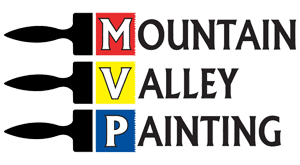Graffiti, once a form of artistic expression, has evolved into a contentious urban issue. While some graffiti may be aesthetically pleasing and serve as vibrant street art, much of it constitutes vandalism and defacement of public and private property. Graffiti can diminish the appeal of neighborhoods, lower property values, and contribute to a sense of urban decay. Consequently, its prompt and effective removal is crucial. Unfortunately, graffiti removal can be a challenging and time-consuming task, often requiring the expertise of professional services. In this blog post, we’ll delve into the difficulties associated with graffiti removal without professional intervention.
- The Pervasiveness of Graffiti
One of the first challenges property owners face when dealing with graffiti is its sheer pervasiveness. Graffiti can appear on a wide range of surfaces, from walls, fences, and sidewalks to bridges, trains, and even statues. The varying materials and textures of these surfaces make it difficult to find a one-size-fits-all solution for removal.
- Unpredictable Composition
Graffiti can be made using an assortment of materials, such as spray paint, markers, stickers, or even etching tools. Each type of graffiti requires a different removal approach. Some may come off relatively easily with basic cleaning agents, while others can be stubborn and resistant to traditional cleaning methods.
- Surface Damage and Compatibility
Attempting to remove graffiti using harsh chemicals or abrasive cleaning methods can cause irreparable damage to the underlying surface. Porous materials like brick or concrete can absorb paint, making removal particularly difficult. The wrong cleaning agent may lead to discoloration, fading, or erosion of the surface, further exacerbating the problem.
- Inadequate Cleaning Agents
Homeowners often resort to using household cleaning agents to remove graffiti, believing they’ll be cost-effective and sufficient for the task. Unfortunately, these standard cleaning solutions rarely have the potency needed to tackle graffiti effectively. Moreover, they may pose environmental hazards and health risks when misused.
- Time-Consuming Efforts
Removing graffiti manually can be a time-consuming process, especially for large or intricate tags. Individuals attempting to clean graffiti without professional assistance often find themselves spending hours scrubbing and still not achieving satisfactory results. This wasted time could be better spent on other productive endeavors.
- Lack of Expertise and Tools
Professional graffiti removal services possess the knowledge, experience, and specialized tools required to tackle graffiti effectively. Without the right equipment and training, amateur attempts at removal can yield subpar outcomes, leading to the persistence of unsightly marks on the property.
- Risk of Legal Consequences
In many jurisdictions, property owners are legally obligated to remove graffiti from their premises within a specified timeframe. Failure to do so can result in fines and penalties. When property owners attempt DIY removal and cannot completely eradicate the graffiti, they may inadvertently find themselves facing legal consequences for non-compliance.
Graffiti removal is undoubtedly a challenging task, and attempting it without professional services can lead to unsatisfactory results, surface damage, wasted time, and legal consequences. The importance of prompt and effective graffiti removal cannot be overstated, as it not only enhances the aesthetic appeal of neighborhoods but also fosters a sense of community pride and safety. By engaging the expertise of professional graffiti removal services, property owners can ensure that their spaces are restored to their original state, free from unsightly tags and vandalism. Remember, investing in professional services is not just an expense but a long-term investment in the integrity and beauty of your property.

